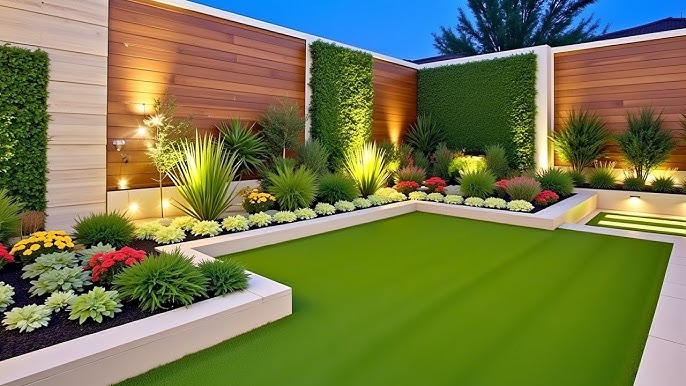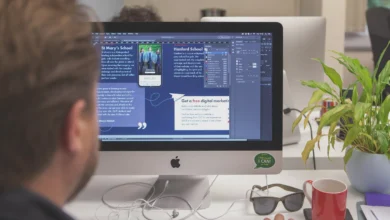Transforming your outdoor space into a beautiful, functional garden can completely change how you experience your home. Whether you have a sprawling backyard or a modest urban plot, innovative Garden design offers endless possibilities to enhance your environment. With creativity, careful planning, and a mix of modern trends and timeless principles, you can create a garden that is both aesthetically pleasing and perfectly suited to your lifestyle. This guide explores fresh ideas that can help you reimagine your garden and make it a vibrant, inviting retreat.
Embracing Sustainable and Eco-Friendly Design
One of the most exciting trends in garden design today is sustainability. Incorporating eco-friendly features not only benefits the environment but also reduces maintenance and resource use. Native plants, which are adapted to your local climate and soil, thrive with minimal watering and care, attracting beneficial wildlife such as bees, butterflies, and birds. Using rainwater harvesting systems or installing permeable paving reduces water runoff and conserves this precious resource.
Consider creating a composting area to recycle garden waste and kitchen scraps into rich soil for your plants. Raised beds made from recycled or sustainably sourced materials promote healthy soil and ease planting. Sustainable design can also include energy-efficient garden lighting powered by solar panels and organic mulches that improve soil quality while reducing weeds. This eco-conscious approach makes your garden a healthy, self-supporting ecosystem that looks stunning year-round.
Incorporating Multi-Functional Outdoor Living Areas
Garden design is no longer just about plants and pathways—it’s about creating outdoor rooms that serve multiple purposes. Think of your garden as an extension of your home where you can relax, entertain, work, and play. Combining seating areas, dining spaces, and open lawns offers flexibility for various activities.
Modular furniture that can be rearranged to suit different needs brings versatility. Adding features such as fire pits or outdoor fireplaces creates a cozy atmosphere for evening gatherings and extends the usability of the garden through cooler months. Outdoor kitchens with grills, countertops, and storage allow seamless alfresco dining experiences. Including a quiet nook with a hammock or swing chair invites peaceful moments alone. Thoughtful lighting solutions, such as string lights, lanterns, or spotlights, transform your garden into a magical space after dark. By designing multi-functional zones, you maximize both enjoyment and space efficiency.
Using Vertical Gardening to Save Space and Add Interest
Vertical gardening is an innovative solution for small or awkwardly shaped spaces. It transforms walls, fences, and even unused vertical surfaces into lush green features. This technique not only adds texture and color but also increases planting area without expanding your garden footprint.
Install trellises, living walls, or plant pockets to grow climbing vines, herbs, succulents, or flowers. Vertical gardens can become striking focal points or natural privacy screens. Incorporate creative elements such as recycled pallets, hanging pots, or vertical planters made from wood or metal to add character. This approach also makes gardening more accessible for those with limited mobility or time. Vertical gardening breathes new life into underutilized spaces, making your garden feel more dynamic and layered.
Designing with Edible Landscaping in Mind
Integrating edible plants into your garden design is both practical and rewarding. Edible landscaping blends vegetables, herbs, and fruit-bearing plants with ornamental features, creating a garden that looks beautiful and feeds you. Raised beds, container gardens, or dedicated fruit tree areas can be woven seamlessly into the overall design.
Choose plants that suit your climate and culinary preferences. For example, vibrant herbs like basil, thyme, or rosemary can be planted near seating areas or paths for easy access while cooking. Berry bushes and dwarf fruit trees add visual appeal and delicious harvests. Companion planting with flowers that attract pollinators encourages healthy crops. Incorporating edible plants supports sustainable living and adds an interactive element to your garden that engages all senses.
Introducing Water Features for Tranquility and Style
Water elements bring movement, sound, and serenity to garden spaces, elevating the sensory experience. Whether you have a large pond or a compact fountain, incorporating water into your garden design creates a relaxing atmosphere and enhances biodiversity.
Consider installing a small pond with aquatic plants and fish to attract frogs and dragonflies, adding life and color. Bubbling fountains or waterfalls provide soothing sounds that mask urban noise and encourage mindfulness. Modern water walls or minimalist troughs work well in contemporary designs. Solar-powered pumps offer energy-efficient options for running water features with minimal maintenance. Lighting around water features at night creates dramatic reflections and ambiance. Thoughtful placement and design of water elements turn your garden into a peaceful oasis.
Blending Hardscaping with Softscaping for Balance
A successful garden design balances soft elements like plants with hardscaping features such as patios, paths, walls, and structures. Hardscaping provides structure, functionality, and contrast, while softscaping adds color, texture, and life.
Use materials like natural stone, brick, concrete, or wood to define walkways, terraces, or seating areas. Incorporate curves and geometric shapes to complement your garden style, from formal to rustic. Integrate steps, retaining walls, or raised planters to create levels and visual interest. Combine these with lush planting beds, shrubs, and trees to soften edges and add depth. This balance creates a harmonious and inviting environment that is both beautiful and practical, ensuring your garden is easy to navigate and visually appealing in every season.
Playing with Color, Texture, and Seasonal Interest
Vibrant colors and varied textures keep your garden exciting throughout the year. Use a mix of flowering plants, foliage, and hard materials to create contrast and rhythm. Choose a color palette that suits your taste—whether calm and monochromatic or bold and eclectic.
Consider plants that bloom at different times to maintain continuous interest. Include evergreens and ornamental grasses for winter texture and movement. Experiment with leaf shapes and sizes to add layers and complexity. Ground covers, mulch, and decorative stones contribute additional texture and help with weed control. Seasonal displays such as bulbs in spring or colorful foliage in autumn bring dynamic changes to the landscape. Thoughtful combinations of color and texture transform your garden into a vibrant, living artwork.
Adding Smart Lighting for Function and Drama
Lighting is a key component in garden design that extends usability and enhances aesthetics. Well-planned lighting highlights focal points, improves safety, and creates mood.
Incorporate path lights to guide guests safely, uplights to showcase trees or sculptures, and downlights to illuminate seating areas. Use warm white bulbs for a cozy atmosphere or colored lights for dramatic effect during special occasions. Solar-powered lights are eco-friendly and easy to install without wiring. Consider motion sensors and timers to control lighting efficiently. Integrate lighting with your garden’s natural features to create shadows and highlights, adding depth and intrigue. Smart lighting systems can be controlled remotely or set to change throughout the evening, making your garden both functional and enchanting.
Creating Private, Intimate Spaces
Privacy is a crucial element in garden design, allowing you to enjoy your outdoor space without feeling exposed. Creating intimate zones within your garden can provide quiet retreats for relaxation or socializing.
Use tall hedges, bamboo screens, or lattice panels with climbing plants as natural barriers. Position seating areas away from neighbors’ sightlines and near sound-absorbing features like water or dense planting. Pergolas or gazebos draped with fabric or vines offer shelter and seclusion. Even small corners can become cozy with the right furniture and accessories. Designing private spaces invites you to fully unwind and enjoy your garden in comfort and peace.
Incorporating Art and Unique Garden Features
Adding artistic elements and unique features personalizes your garden and makes it memorable. Sculptures, mosaic stepping stones, decorative pots, or whimsical garden ornaments reflect your style and creativity.
Use natural materials like driftwood or stone for a rustic feel, or sleek metals and glass for a contemporary touch. Murals or painted fences provide colorful backdrops. Repurposed objects such as old ladders or wheelbarrows can be transformed into plant stands or focal points. Wind chimes, bird feeders, or solar sculptures introduce sound and movement. These details elevate your garden from ordinary to extraordinary and create a space that truly feels yours.
Conclusion: Let Your Imagination Blossom
Innovative garden design opens up a world of possibilities to transform your outdoor space into a sanctuary of beauty, function, and joy. By embracing sustainable practices, creating multi-purpose areas, integrating vertical and edible gardens, and balancing hardscape with lush plantings, you can craft a garden that reflects your personality and lifestyle. Adding water features, thoughtful lighting, privacy elements, and artistic touches brings depth and charm. The key is to plan creatively while respecting your space’s unique conditions. With imagination and care, your garden will become a stunning, year-round retreat where nature and design flourish together.




